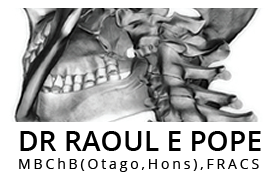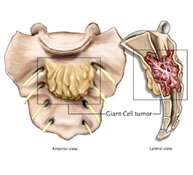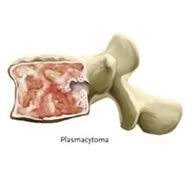Primary Spine Tumours
Primary spinal column Tumours (originating from the spinal column) rarely occur and are either benign or malignant.
Malignant Spinal Tumours
Benign Spinal Tumours
Benign Spinal Tumours
Osteochondroma
Osteochondroma is a slow growing tumour of the cartilage usually affecting adolescents. It is uncommon and is usually found in the posterior (rear) spine.
Osteoid Osteoma
Osteoid Osteoma is a small bone tumour (less than 2 cm). It usually affects adolescents causing night pain and may result in spinal deformity.
Osteoblastoma
Osteoblastoma affects children and adolescents. These Tumours can be large, aggressive, and painful sometimes causing spinal deformity and paralysis.
Aneurysmal Bone Cysts (ABCs)
Aneurysmal Bone Cysts (ABCs) typically cause pain and swelling usually affecting children and adolescents. These Tumours can be large and quite vascular.
Giant Cell tumour
Giant Cell tumour is known to affect children, adolescents and young adults. These Tumours can be found at the cervical, thoracic, or lumbar segments of the spine, but are more common in the sacrum.
Hemangioma
Hemangioma occurs most often in the thoracic spine. These Tumours affect adults and are known to be progressive vascular masses that can cause vertebral collapse and paraparesis (slight paralysis).
Eosinophilic Granuloma
Eosinophilic Granuloma is usually seen in the vertebral bodies of children and adolescents. When this tumour is systemic it is termed Histiocytosis X. Rarely do these Tumours lead to vertebral collapse and paraparesis. On occasion, they may heal spontaneously.
Malignant Spinal Tumours
Plasmacytoma
Plasmacytoma presents in middle aged and older adults. These Tumours are common in the pedicle and vertebral body and may cause paraparesis.
Myeloma
Myeloma is the most common primary malignant tumour of bone. It typically affects adults greater than 40 years of age. It tends to be generalized, involving multiple bones, but back pain and involvement of the spine is the most common presenting complaint. Treatment is palliative; meaning that disease can be controlled, but not completely cured. Chemotherapy is used to control the pain and slow the progression of the disease. Surgery may be required if pathological fractures develop or there is compression of the spinal cord.
Ewing's Sarcoma
Ewing's Sarcoma is an aggressive tumour affecting adolescents and young adults. In some cases, it may metastasize.
Lymphoma
Lymphoma may present in one or more vertebral bodies in middle aged or older adults. Sometimes the lymphatic system is involved.
Chondrosarcoma
Chondrosarcoma is a tumour affecting spinal cartilage in middle-aged adults. It grows slowly but can be dangerous. Usually aggressive medical intervention is required.
Osteosarcoma
Osteosarcoma is bone cancer found in adolescents and middle-aged adults. These Tumours may metastasize requiring aggressive medical therapy.
Chordoma
Chordoma is usually seen in adults frequently (50%) involving the sacrum, although it can affect other parts of the spine such as the occipito-cervical junction (where the head joins the neck). These Tumours often require aggressive medical therapy.
Spine pain does not always indicate tumour presence. However, early medical intervention is always warranted if spine pain does not resolve or if neurologic deficit is experienced.
Courtesy of: http://www.back.com/causes-Tumours.html














